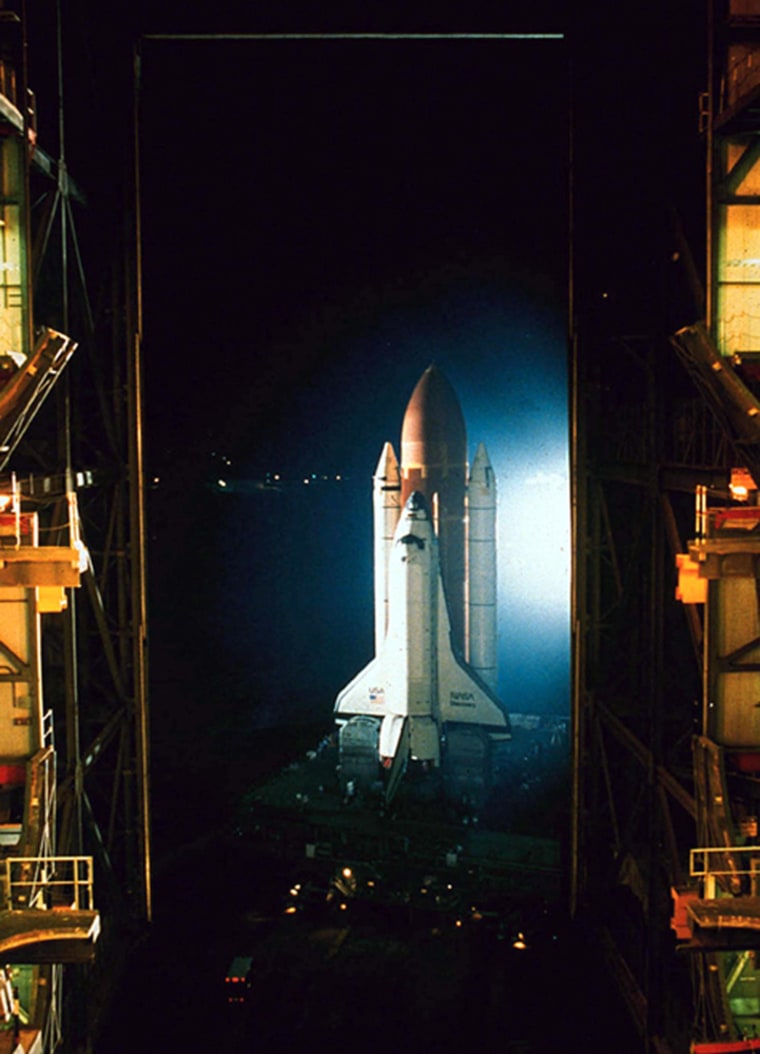The why of the Challenger disaster lies in the thoughts and perceptions of those in charge, in their willingness to be nudged and persuaded by such factors as their “public image” with the taxpayers.
On the eve of the Challenger accident, the “movers and shakers” of the space shuttle program were concerned not only with how the taxpayers might react to continued delays that had been plaguing their launch schedule, but more to the point, how Congress was viewing the situation. The public could get disgusted with the constant delays, but Congress could cut the fiscal jugular.
In the weeks before Challenger, the agency’s image had taken a pounding on the streets, in the coffee shops and in newspaper editorial columns; on Capitol Hill, the heat had elevated to a sound thrashing by congressional leaders against the NASA team. After all, the record spoke in loud and damning terms. There had been one accursed delay after another plaguing NASA’s commitment to fly 15 shuttle missions in 1986. And the agency’s promise to the congressional purse-keepers that they’d soon launch 52 shuttle missions a year was so far-fetched that many considered it to be humorous.
NASA was doing a splendid job of falling flat on its collective face. The glory days of walking on the moon were in the distant and rapidly receding past.
Former NASA leaders had faced disasters and cliffhangers. They’d lived through the Apollo 1 fire on its launch pad that took the lives of three bright, wonderful astronauts. They’d performed miracles when Apollo 13 blew out its ribs and mechanical intestines 200,000 miles from Earth on its way to the moon. They came within a gnat’s whisker of dying. But the bullet missed, right? The crew did come home.
If the unseasoned management team awaiting Challenger’s launch had some of that experience, they’d know that Alice might have stumbled through the Looking Glass without a scratch, but reality was a terrific taskmaster. The old team would have said, “The hell with ‘image’! Scrub! And don’t set up the launch until you’ve got all your ducks in a row!”
The team that had brought the first shuttles to their launch pads had been hardened through the ages of aeronautical development and the pain of too many friends and test pilots burned and crushed in disaster. They knew when to say “STOP!”
But the newcomers, with their gleaming NASA ID badges and shiny lapel pins, were shouting to Congress that “If you just give us the money, we could pop off a shuttle once every week!”
Money wasn’t the answer, and it never had been.
The problem was that the old pros, the boys who knew what was what and how to deal with reality, had developed wrinkles and stooped shoulders and poor vision, ailing stomachs and creaky joints. They’d been pushed out the door to make room for the “management of the ’80s.”
NASA had thrown away experience for “smooth-talking, Washington-polished slicks” that measured high on everyone’s political yardstick.
It wasn’t that this new management group didn’t try, or that they didn’t care. Of course they did. But you don’t expect your mechanic to fly your airliner, or the doorman to your doctor’s office building to carve through your intestines to fix ails you. You get the best experienced professionals to do the job.
The professionals were gone, and not even the sounds of hard leather heels tapping the long corridors could be heard any more. What, then, could their replacements do?
For one, they simply didn’t know what it was like to take off their coats, push back their hats, and with tools in hand and experience between the ears, march out to the launch pad to fix a balky rocket. It was that simple.
They were simply not “hands on” managers. Their academic records may have been glowing, but they often lacked actual knowledge and experience.
For the future, we can only hope that during the hundreds of hours of tricky and risky spacewalks needed to raise the International Space Station in orbit, history does not repeat itself.
There is one thing on our side this time. As suggested in the aftermath of the Challenger disaster, experienced astronauts have been placed in senior management positions. These hands-on astronauts have the final say over whether a launch is a go.
But are the steps that are being taken enough?
Only time will tell.
NBC News correspondent Jay Barbree has covered America’s space effort from Cape Canaveral for more than 40 years. This is an updated version of a series that was first published on MSNBC.com in January 1997.
